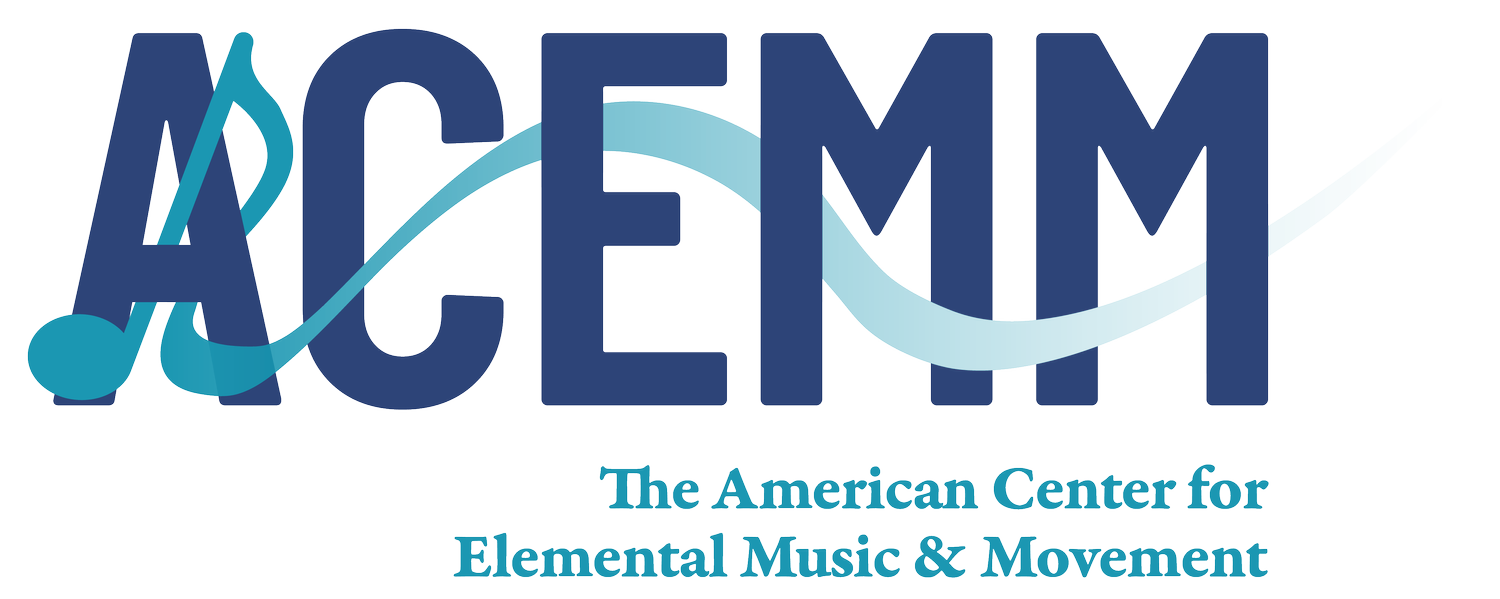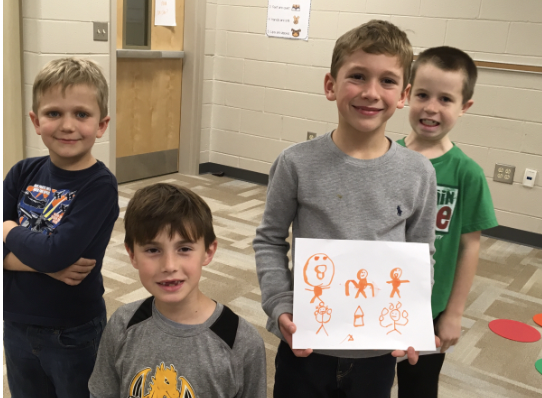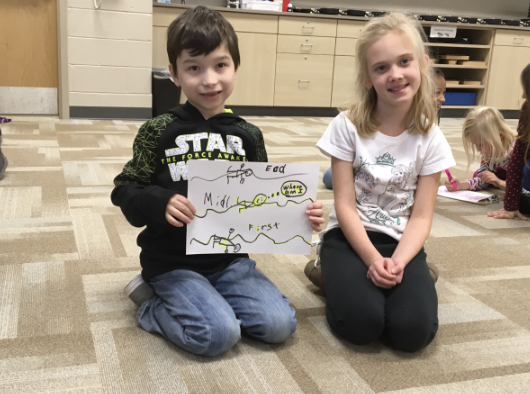A food-themed exploration of Vaughan Williams’“March Past of the Kitchen Utensils” through movement and play!
A Lesson by Melissa Burroughs
YOU’RE INVITED!
As educators who use movement to initiate music learning, we often explore a variety of themes to make connections with our students and to make these experiences lively and playful. One topic that never gets old in my classroom is food! My second grade students used Ralph Vaughan Williams’ composition “March Past of the Kitchen Utensils” to begin a musical feast. As a french horn player who also started her teaching career as a high school band director, I have long loved instrumental music. I seek high quality pieces for my students, and this particular composition has become a favorite in my classroom because of its lively feel. It is one of five sections of Williams’ larger suite of incidental music, composed for a 1909 production “The Wasps,” an Old Comedy written by Aristophanes, a playwright from ancient Athens. “The Wasps” tells the somewhat humorous story of a man that loved the law and trials so much that he actually stages with two household dogs concerning a piece of stolen cheese. The kitchen utensils serve as witnesses to this trial created to appease the man’s needful feeling to do something judicious.
When I added the novelty of actually having a plastic utensil toy to hold while they marched about, their posture and purpose rose to a whole new level. They tirelessly practice steady beat as they experience the form through movement.
We reviewed what a marching style of walking can look like and explored how we can march to the beat. You may also introduce the term “march past,” referring to a procession, sometimes military, and its connection to what students probably know as a “parade.” Students first tapped the steady beat while they listened to the piece, alternating different ways to tap the beat by watching and mirroring me. We then discussed what they heard in the music using their own words to describe the change in mood, tempo, and style. The basic form of the piece is ABA; for our musical feast we called this form a “musical sandwich.” During the A section, students marched to the steady beat (locomotor). When they heard the B section they feverishly cooked up their favorite dish in their kitchen (nonlocomotor). They returned to the marching until the end of the piece and proudly delivered their delectable treat to the table (locomotor).
Students march around the room
On their second try, I gave students a toy plastic utensil to use to enhance their action and play. With the novelty of having a utensil to hold while they marched about, their posture and purpose rose to a whole new level. They tirelessly practiced steady beat as they experienced the form through movement. After sharing this lesson with my classes, many students had the idea of raising their utensil into the air on the accented notes, which I thought was brilliant! After listening, Faith, a second grader, pointed out: “Some of it repeated and some of it didn’t. When we got to the middle part there were beautiful sounds when we were mixing.” Through several experiences with the piece, she began to fully understand the structure. Of course, at the end of the piece we share what delicious dish we have “just prepared” with a neighbor. They can just tell them or “give them a bite too.”
EXPLORING FORM
In their next classes, I had students create their own stories for different sections of the piece. We tried some of the ideas and created choreography to fit their story. Students worked in teams to draw the plan, like a map, for their story. We explored hiking through a forest, getting lost, and then finding our way again, as well as many other ideas. One of my favorite ideas was swimming through the ocean, getting caught in a whirlpool, and then getting out again, as the music does have a nautical feel. Nolan said that he like creating his own story because “you could think of your own movements and you don’t have to just do the marching story.” Kids love having ownership in the classroom and being able to create on their own.
This video segment shows students performing the B section, then returning to the A section:
MORE POSSIBILITIES
The ABA form lends itself to connection with the form of other pieces. This piece has many possibilities and it has definitely spiced things up for kids in my music class. Later in the lesson, students used food manipulatives to create rhythm phrases to speak and then add body percussion. These manipulatives allow students to group their sounds into measures and add a repeat sign easily. We turned this into a rondo with the spoken phrase “Yum! Yum! Eat it all up!” repeated four times.
Additional food related possibilities:
One Hundred Hungry Ants by Elinor J. Pinczes
Traditional tales and songs:
Pumpkin Stew
Going on a Picnic
Mabel, Mabel
Chop, Chop, Chippity Chop
The Muffin Man
Listen to more selections from Ralph Vaughan Williams’ “The Wasps”
Explore other pieces of incidental music
Explore other dramas, and make connections to history of ancient Greece
Food also serves as a great connection with different traditions and cultures!
The possibilities are endless…Where will your musical journey take you?
Melissa Burroughs is a National Board Certified Early and Middle Childhood Music Teacher at Doby’s Bridge Elementary in Fort Mill, South Carolina and an adjunct professor teaching Integrated Arts at Winthrop University in Rock Hill, SC. She received her undergraduate and Master’s degrees there. Although she has used Orff Schulwerk in her classroom for a while, her study of Orff Schulwerk levels began at Winthrop University with Level I in 2014. She completed Level II at George Mason University in 2016 with plans to complete Level III in the near future. Melissa is the co-founder of “Good Vibes,” a new ukulele collective starting in York County, South Carolina and volunteers with children’s music at her church. She serves as a STEAM Leader Corps teacher working in her school in conjunction with Discovery Ed to promote the arts as a powerful tool to shape the lives of children.






